

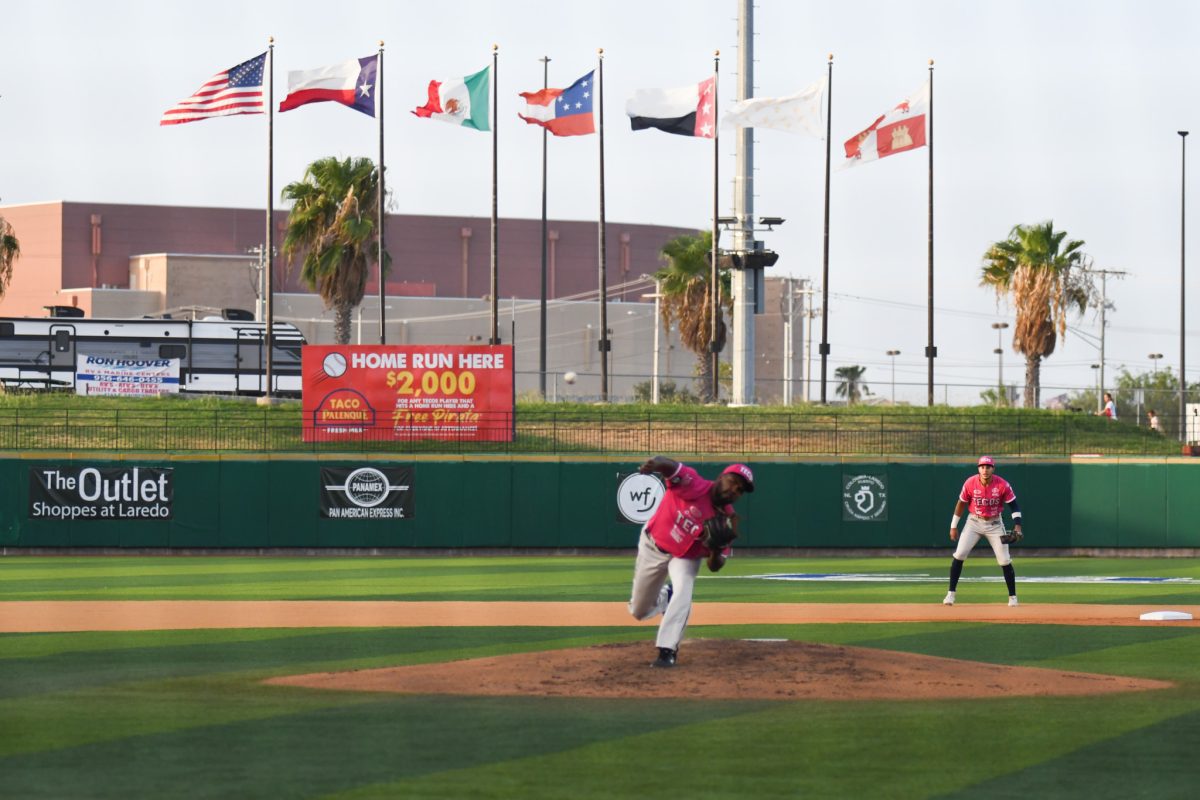
Tecolotes de Los Dos Laredos starting pitcher Wendolyn Bautista delivers a pitch during the first inning against Tijuana on July 26, 2023. The seven flags beyond the outfield wall represent each nation that has governed Laredo at different times in its’ history. (Photo: Leif Skodnick/World Baseball Network)
Tall, lean, and sweating under the hot summer night sky, righthander Geoff Broussard toed the edge of the pitcher’s rubber closest to third base and fired a 2-2 fastball low and inside to Noah Perio.
The crowd at Parque La Junta in Nuevo Laredo, Tamaulipas, Mexico, was hanging on every pitch. Broussard, the closer for the home town Tecolotes, came on for the ninth with the “Tecos,” as they are colloquially known, clinging to a 2-1 lead against the first-place Toros de Tijuana.
In the stands, a loud crowd has filled the tiny ballpark nearly to its capacity, hungry for a sweep of first-place Tijuana, and noise comes from drums, from lungs, and from mechanical noisemakers.
After falling behind Perio with his first two pitches, Broussard came back with two high fastballs. Perio fouled each of them back to the screen.
Now, the 32-year-old Californian who has pitched for 17 different teams in places ranging from Venezuela to Salt Lake City to the Jersey Shore looked for a sign from his catcher, Francisco Arcia. His knees dipped, his wind up began, and Broussard fired a knee-level fastball. Perio swung over the top of it. Strike three. One out.
—
Eight thousands trucks a day, sometimes more, cross the border from Mexico into the United States here at Laredo, making it the largest inland port on the U.S. border. Interstate 35 begins its 1,568-mile path to Duluth, Minnesota, just a few hundred yards past the American landing of International Bridge No. 1, and for good reason.
Stretching 1,255 miles from El Paso, Texas, to the mouth of the Rio Grande on the Gulf Coast, the Texas-Mexico Border region’s biggest industry is the border itself: negotiating goods through the porous barrier between the two countries.
And situated on top of the bluffs that buffet the east bank of the Rio Grande, the city of Laredo, Texas, is many things.
An outpost. An entry point. American. Mexican. A gateway. A barrier.
It’s been immortalized in song telling the story of a young cowboy who knew he did wrong, and in literature, with the title of the song about the cowboy lending its name to the final book of Larry McMurtry’s Lonesome Dove trilogy.
Across the river, of course, is Nuevo Laredo, Tamaulipas, Mexico, founded in 1848. The claim is that several families in Laredo, not wanting to be American citizens following the Treaty of Guadalupe Hidalgo that ended the Mexican-American War, moved across the river, going so far as to exhume their ancestors and rebury them across the river in Mexican soil.
While Nuevo Laredo has, since its founding, been Mexican, Laredo, Texas is known as the “City Under Seven Flags,” having been at different times under the control of Spain, France, Mexico, the Republic of Texas, the Confederate States of America, the United States, and for a brief period, the Republic of the Rio Grande, a short-lived 19th century nation whose capital was Laredo. Its former capitol building still stands in downtown Laredo, next to the La Posada hotel which houses a museum honoring the Republic of the Rio Grande, and across from the Cathedral of San Agustin.
Laredo is a city in the United States with a Mexican soul, and it’s a baseball town, one with a unique place in professional baseball: Uni-Trade Stadium in Laredo, Texas, is the home, for half of the home season, of the Tecolotes de Los Dos Laredos of the Liga Mexicana de Beisbol.
The other home ballpark for the Tecos is Parque La Junta in Nuevo Laredo, 11 miles and an international border away, a unique arrangement that makes the Tecos the only bi-national team in professional baseball.
The Two Laredos are, in many ways, one city. They have a common heritage that predates each nation, a common language, and a common heritage. The 2020 United States census showed that Laredo, Texas is more than 95% Hispanic, making it one of the least diverse cities in the country.
“We’re divided by a river, but it’s basically one big city,” said Cuithlahuac Rodriguez, one of the Tecos’ two general managers. “I lived in Nuevo Laredo for half my life. I still have family over there. It’s the same for the people over there. They have family over here. The bridge sometimes is just a speed bump, a checkpoint.”
—
Story continues below photo.
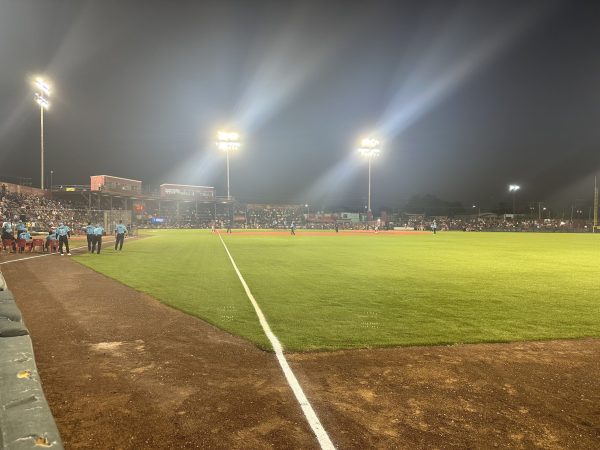

Two hours before gametime on a Thursday night, the Tecos are getting ready to face Tijuana, and Geoff Broussard is standing down the left-field foul line at Parque La Junta in Nuevo Laredo, holding a football, a Nerf football with one of those tails that make it look like a mortar shell, a baseball, and a red baseball glove. Clad in shorts and a thin hoodie with a Tecolotes logo, the combination of his pregame routine and the 102-degree day have enabled him to work up a good sweat.
“I had no idea what to expect when coming to the border first. The only other border I ever crossed was Canada. So coming down here was a little different,” Broussard said. He had played in the Liga Mexicana del Pacifico for Mexicali during the 2019-20 season, and five strong appearances drew notice from the Tecos, who tendered him a contract for 2021.
He’s now in his third season for the Tecos, and has gotten used to the routine here, which includes walking across an international border for every other home game. Most of the players who hold U.S. citizenship live in Texas, so they’ll usually get to Parque La Junta by first walking across one of the bridges that links Laredo and Nuevo Laredo, then, after they clear customs, getting a taxi to the ballpark.
“They told us we would have to walk across every other day or whatever when we were home. I was like, ‘OK, that’ll be new.’ And it’s not a big deal at all. It’s smooth,” Broussard said. “We walk across, come back after the game. It’s something I’ve gotten used to very easily. And the new guys here, they’re a little apprehensive at first when they come, but as soon as they do it, they’re like, ‘Okay, easy peasy, no problem.’”
Uni-Trade Stadium, the Tecos’ 11-year-old Texas home, resembles a Spanish mission from the outside, and feels like most minor league ballparks in the United States once you walk through the gates. Twenty rows of green plastic seats stretch from first base to third base around a manicured artificial turf field, there’s a grass berm beyond the outfield wall, and on the second level, luxury suites, a bar, and the press box. There’s an atmosphere that exudes family entertainment, three (and sometimes more than three) mascots roam the field and the stands, and all the music you expect to hear at a ballpark, from John Fogerty’s “Centerfield” to Los Del Rio’s “Macarena” will hit your ears.

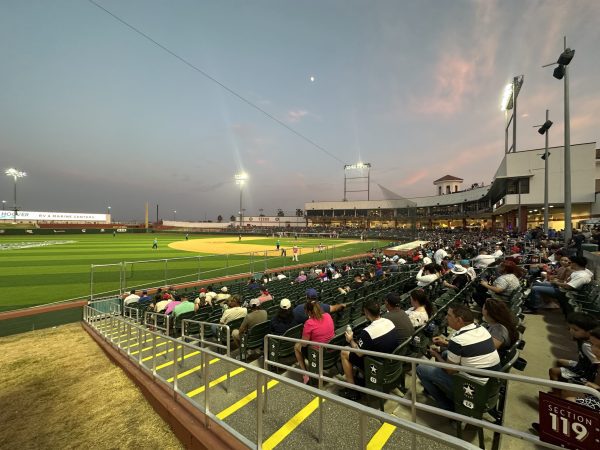
Originally built for an independent league team called the Laredo Lemurs, Uni-Trade Stadium is the second ballpark the Tecos have called home in Laredo, Texas. The first, West Martin Field, hosted the team from 1985 to 2004.
“We noticed that we got more media people from here… than from over there. So we thought, ‘Why don’t we play a game of every series in Laredo, Texas?’” said Cuauhtemoc “Chito” Rodriguez, a long-time Tecos general manager who also served as the general manager of the Tigres de Quintana Roo through two moves and six LMB championships. A soft-spoken man, Rodriguez won a total of nine LMB championships as a general manager, served two terms as Chairman of the Board of the league, was inducted into the Mexican Baseball Hall of Fame in Monterrey, and was presented with the King of Baseball Award by the National Association of Professional Baseball Leagues in 2011.
The idea made sense, but they needed a ballpark.
“We went to the field they had here in one of the high schools, and we brought a guy from the Mexican League to tell us and to tell them what was needed in order to have that stadium ready to play our type of baseball. So they invested some money into lights and the field,” Rodriguez said. That ballpark, West Martin Field, is now known as Veterans Field, and is still used by the Laredo Independent School District.
For 19 years, the Tecos split their home schedule between Parque La Junta in Nuevo Laredo and West Martin Field, until the original LMB franchise was sold and moved to Tijuana. Baseball returned to Nuevo Laredo when the Rieleros de Aguascalientes moved to town in 2008, but that franchise didn’t play any games in Texas.
After Laredo, Texas briefly hosted the Lemurs of the American Association, the Liga Mexicana de Beisbol returned in 2017 when the Rojos del Aguila de Veracruz franchise was moved to the Two Laredos.
The Lemurs, playing at Uni-Trade Stadium, were a typical minor league operation.
“They had even the wackier promotions and all that stuff, but the people in Laredo, they want the Tecos,” said Cuitlahuac “Cuit” Rodriguez, Chito’s son and the general manager of the Tecos’ operation in Laredo, Texas. Rodriguez said the record for single-game attendance at Uni-Trade Stadium – one that has yet to be broken – was for an exhibition game between the Lemurs and the “Tecos.”
“I think it was their second to last season, the Laredo Lemurs announced an exhibition game. And they said it was going to be against the Tecos,” Rodriguez said. “The Tecos didn’t exist back then. They just got a couple of guys together from Nuevo Laredo and put a jersey on them that said ‘Tecos,’ and it was a record crowd.”
With business operations in two countries, the Tecos have what are essentially parallel operations – two sets of sponsorships, two sets of season-ticket holders, and two ballparks, though they are one organization. The younger Rodriguez handles the business of the Tecos in the United States, while Armando Lozano runs business on the other side of the river.
But as the old line goes, baseball is baseball – and everywhere outside of the Major Leagues, the biggest challenge for management is getting home games on the right dates.
“There’s the traditional days that we like to play here, like on Fourth of July, and this year, we got the Cinco de Mayo, which is really celebrated more in the U.S. than in Mexico,” Cuit Rodriguez said. “But other than that, the biggest challenge is to see what games we’re going to actually play here. How are we going to split them up?”
Usually, during a three-game series, two games will be at Parque La Junta in Nuevo Laredo and the third will be at Uni-Trade Stadium.
—
Story continues below photo.

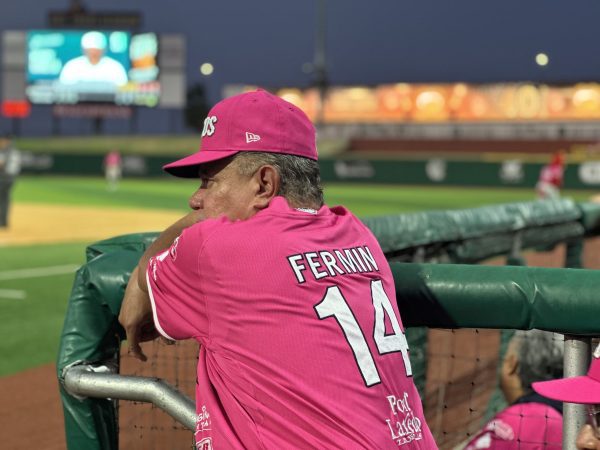
Tecolotes de Los Dos Laredos manager Felix Fermin watches from the first base dugout at Uni-Trade Stadium on July 29, 2023. (Photo: Leif Skodnick/World Baseball Network)
In the home dugout at Parque La Junta, Tecos manager Felix Fermin, a veteran of 12 Major League seasons as a middle infielder and a well-traveled manager who wins wherever he goes, from his native Dominican Republic to the LMB and the Liga Mexicana del Pacifico, reflected on the Tecos’ two homes.
“Both fields, you know, the wind blows in from right field and you need to train the same. You have to hit the ball to left field for the ball to get out – it, like, plays the same way in both of the stadiums,” said Fermin. “We gotta find some good right-handed hitters to take advantage of both stadiums.”
Outside Parque La Junta, tall palms rise high over the roofs of one- and two-story cement houses. A soccer stadium is beyond the right field wall, and an Oxxo, the ubiquitous Mexican convenience store, is directly across the street from the front gate. Street vendors are grilling hot dogs and chili peppers outside the Oxxo.
Six rows of seats rise in the cement grandstand that stretches in an arc from just beyond first base to just beyond third, and another six rows of seats stretch from below the concourse, which runs in front of the concrete grandstand, to the backstop. In each grandstand tunnel, coolers full of ice keep countless cans of beer cold. The temperature rose to 102 degrees the night World Baseball Network visited, and the near-capacity crowd at Parque La Junta is always thirsty.
“When I play at Uni-trade, honestly, I feel like I’m back in minor league ball. It’s a nice ballpark and all that stuff. It’s not overly big,” said Tecos reliever Sam Bordner. “La Junta, it’s honestly kind of like what you embody any sort of Mexican sport. Everybody’s into the game, they’re all having fun. It’s actually fun. It’s fun to play in both stadiums, but if I were to pick, La Junta’s a little bit more fun to play in.”
Later in the evening, the sun was lower in the sky when the wind started to pick up, blowing in from right field as Fermin said it would.
When Geoff Broussard got to the mound to start the ninth, the Tecos had a 2-1 lead, with both runs coming on solo home runs to left field – one by first baseman Balbino Fuenmayor, a Venezuelan who made it as far as Triple-A in the Kansas City Royals organization, in the second, and another by outfielder Danry Vasquez, a Dominican who made it as high as Double-A in the Houston Astros organization, in the third.
Full of noise, the small ballpark reverberates with cheers, noisemakers, drums, an air horn. The fans here know the game, they know its importance – the Tecos are two outs away from a three-game sweep against the team they trail by 2.5 games in the standings, with the end of the regular season just over a week away.
The next batter, Amadeo Zazueta, stepped in for Tijuana, and took a fastball over the heart of the plate for strike one. Broussard came back with another fastball inside to Tijuana’s right-handed hitting shortstop, who smacked a weak ground ball to the left side of the infield. Tecos shortstop Henry Gatewood went to his right, deep in the hole, made a perfect throw to first to get Zazueta by a step. Two away.
–
Story continues below photo.

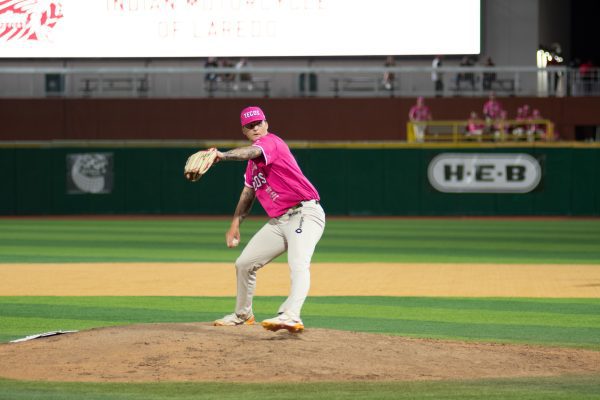
Sam Bordner delivers a pitch for the Tecolotes de Los Dos Laredos in the eighth inning of a game against Saltillo on July 29, 2023. Bordner joked that he’s playing in the Liga Mexicana de Beisbol to put off adulthood for as long as possible. (Photo: Leif Skodnick/World Baseball Network)
To most American baseball fans, saying the words “Mexican League” conjures the image of aging catcher Jake Taylor, played by Tom Berenger, asleep in a bed, an enormous sombrero covering his face and the feet of an unknown woman sticking out from under the covers at the beginning of the 1988 movie “Major League,” when the phone rings, offering the old backstop an opportunity to return to the Major Leagues.
Or they’ll picture fallen star Kenny Powers, played by Danny McBride, in the HBO series “Eastbound and Down,” pitching for the Charros, entering the game from the bullpen while wearing an American flag like a cape to the corny strains of “Real American,” a song best known as Hulk Hogan’s WWE entrance music during the 1980s.
But the Liga Mexicana de Beisbol is a far better league than those two fictional portrayals give it credit for. It has been a place for African-American players to play for good salaries prior to the integration of the Major Leagues. Over the years, it had teams that held affiliations with Major League teams, and had been classified as Triple-A while it was a part of the National Association of Professional Baseball Leagues, the organization that oversaw affiliated minor league baseball until 2020, when Major League Baseball dissolved it.
The LMB has developed young players who went on to Major League stardom, including Fernando Valenzuela, who first appeared in the league in 1978 with the Leones de Yucatan, and Cuban defector Randy Arozarena, who appeared in the league with the Toros de Tijuana late in the 2016 season before playing winter ball with Mayos de Navajoa in the Liga Mexicana del Pacifico. Two years later, he was in the Major Leagues with the St. Louis Cardinals.
“Obviously, it’s different than the States, but it’s got its advantages as well. You’re getting to learn, you see a whole new country, a lot of new places, meet a lot of new guys, new coaches, everyone who’s been around the game,” Brandon Brennan said outside the Uni-Trade Stadium bullpen. “So you’re learning some cultural differences, while also getting to bring yours into theirs. But the game itself I think is pretty comparable to in the States and Triple-A, it would be my guess. Baseball is baseball.”
Brennan appeared in 50 MLB games with the Seattle Mariners and Boston Red Sox before coming to Laredo at the end of the 2022 season. He pitched over the winter in the Liga Mexicana del Pacifico with the Naranjeros de Hermosillo before returning to Laredo for 2023.
Fermin, the Tecos’ skipper, said the level of play in the league has improved by leaps and bounds from his first season in 2007 when he led the Sultanes de Monterrey to the LMB Championship.
“It’s got a lot of players, a lot of players who were playing Triple-A this year before getting released and coming to play here in the Mexican league. And the league has been growing up the last couple years,” Fermin said. “To go back to the big league – that’s the thing. That’s why the league is so hard right now, because we have some good players, some players who can still play in the big league.”
Money is also a draw. As a league with a high level of play and relatively good salaries, with top players making as much as $10,000 per month in the LMB
There are some big-name players who have appeared in the LMB this year, including former New York Yankees infielder Didi Gregorious, who was with the Algodoneros de Union Laguna before signing a minor league contract with the Seattle Mariners, and Alcides Escobar, the former Kansas City Royal who’s been playing for the Leones de Yucatan and Acereros de Monclova in 2023.
And what about those guys who aren’t trying to get back to the big leagues?
Sam Bordner, the lanky blonde 26-year-old reliever out of the University of Louisville, had a simple answer.
When asked, Bordner gave an easy smile and said, “I’m just trying to put off adulthood as long as I can.”
–
Story continues below photo.

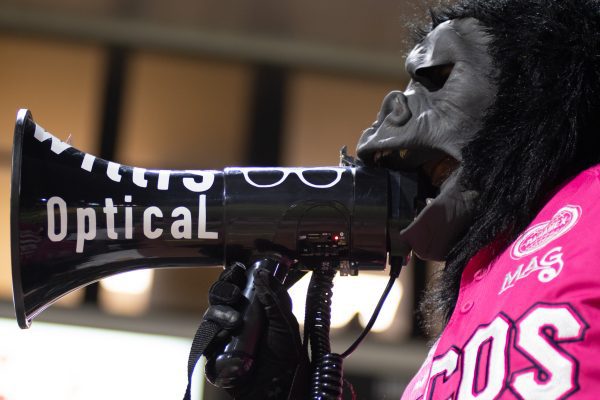
Fernando Flores stepped into the left-hand batter’s box to pinch-hit for Toros catcher Xorge Carillo, and the anticipation was building. Flores represented the last chance for Tijuana and the potential 27th out that would give the Tecos a sweep and extend Tijuana’s losing streak to five games.
Broussard’s first offering, a cutter, missed low and inside, and he came back with a high fastball that Flores fanned on to make it 1-1.
Another cutter missed inside, and again Broussard came back with high heat, and Flores watched it go by for strike two.
“I attacked in, we usually go in to lefties with me, and yeah, I was able to get underneath his bat, throw the cutter in,” Broussard said of the matchup.
Another high fastball, and all Flores could do was hit a grounder to second. Tecos second baseman Ali Castillo fielded it cleanly, tossed to Ryan Aguilar at first, and the game was over, the sweep complete.
“He had to foul off a few, he did fight for a little while,” Broussard, who assumed the closer role with the Tecos a few weeks ago, said. “I was able to roll over one. Ali was in the perfect spot.”
After the third out, young fans rushed out onto the field, jumping into the Tecos handshake line along with the team’s mascots.
The next day, outside the bullpen at Uni-Trade Stadium, Broussard was all smiles, ready to do it again.
“Tijuana, still, I think, has a hold of first place for now, but we definitely shortened that gap quite a bit with a big sweep like that. So that was awesome for us,” he said as he prepared for the Friday night game against the Saraperos de Saltillo. “And in comes Saltillo, same record as us, basically, or close to it. This is going to be another big one.”
With the playoffs just nine games away, he feels the potential for the Two Laredo’s sixth LMB championship is there.
“Our chemistry on this team is, like, anybody can hang out with anybody. It’s great. You don’t see that. It’s very rare,” Broussard said. “And we fight. Our bullpen, our starting staff is amazing. Our pitching is awesome. Our hitting, we’ll fight until the last out, no problem.”
“I have complete confidence in every guy on this team. And the race is so tight right now in our standings, it makes these last 10 games that we’re going to have, very exciting to see what’s going to come.”
The Two Laredos are many things all at once, but together, they’re a baseball town.
Epilogue: The regular season for the Liga Mexicana de Beisbol concluded on August 6, and the Tecolotes finished with a 50-36 record, the best in the Zona Norte. They’ll face the Acereros de Monclova in the first round of the playoffs, which begin on August 9.